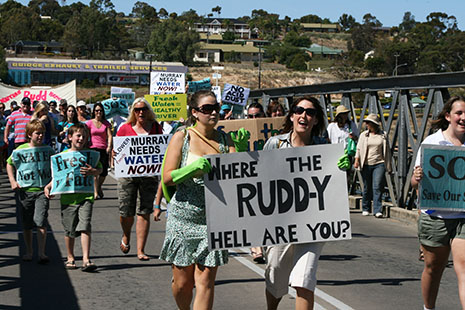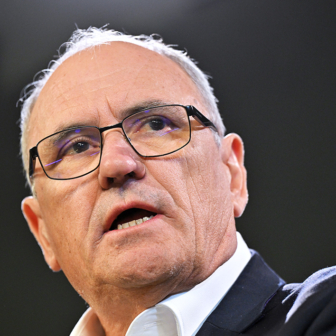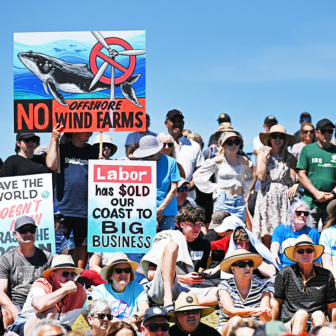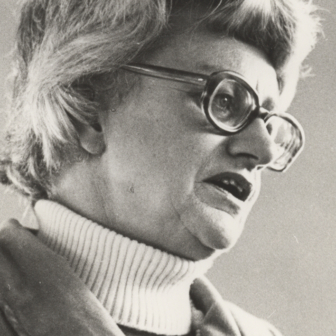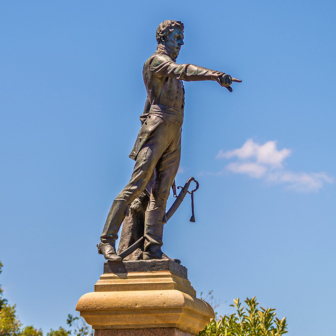YOU DON’T HAVE to drive far out of Adelaide towards the Murray River to see what the fuss is about. The rolling Adelaide Hills, once a region of wet, green farmlands and vineyards, are brown and parched. Down on the plains it gets worse. In New South Wales, Victoria and Queensland, there are many rivers to cross; here in South Australia, there is just one. When South Australians talk of “the river” you know they mean the Murray.
Australia’s second-longest river after the Darling, its main tributary, the Murray holds a pivotal place in South Australia’s consciousness. The state’s 1.5 million people are at the end of the line in a river system that covers two-thirds of Australia’s irrigated farming land. Once, that was not such a big deal. Only seventeen years ago, Adelaide relied on the Murray for just 10 per cent of its water; rain-filled dams in the Adelaide Hills provided most of the rest. Now, after the worst drought in a century, the city depends on the Murray for 90 per cent.
All this is making South Australians ever more bitter about how the bigger, water-guzzling eastern states seem to be ignoring their plight. I was last here at the Murray’s mouth early last year, after a working journey following the river from its source as a clear, fresh stream in the Snowy Mountains of New South Wales. By the time I reached Goolwa – 2530 kilometres downstream, where the Murray reaches the Southern Ocean – the scene was dispiriting. Dredges pumped out sand to keep the mouth open, while people like Jock Veenstra and his son Michael, tour boat operators, watched their livelihoods literally drying up.
Now, I am back joining a party of business people and water experts to see how far things had deteriorated in just fourteen months. A few days before we set out for the river from Adelaide, Rob Freeman, head of the new Murray–Darling Basin Authority, had delivered some grim news. The volume of water flowing into the Murray–Darling system in the first three months of 2009 was the lowest in 117 years. The three-year volume up to March was the lowest ever. Freeman unnerved Adelaide’s one million people when he said this meant the flow of sufficient water down the Murray to meet their “critical human needs” could not be guaranteed.
Of course, things are not quite as dire as they sound. The opening up of Australia’s interstate water trading market since the 1990s has allowed South Australia’s authorities to buy water from NSW farmers on the Murrumbidgee, 700 km away, and keep it in next year’s store for Adelaide. Typical sellers are rice farmers switching to less thirsty crops or livestock. But Freeman still put his finger on the core issue. Between the system’s upper reaches in Queensland and the mouth at Goolwa, drought, climate change, over-allocation to irrigators, evaporation and sheer theft have all robbed the Murray of too much water. Karlene Maywald, South Australia’s Minister for the River Murray and Water Security (a ministry title only South Australia could create), puts it another way: “About 62 per cent of Queensland, where the Murray–Darling system starts, is in flood. None of that is getting down to us.”
Outside the town of Murray Bridge, about sixty-five kilometres south-east of Adelaide, we stop at the pumping station that serves the city’s southern suburbs. Stations like this pump water from the Murray into a 20,000-kilometre network of tunnels distributing the river’s water all over the state. They run as far west as Ceduna, on the edge of the Nullarbor Plain. On the Eyre Peninsula, I am told, some people still don’t drink Murray water, even after such a lengthy journey to them. “They find it too hard,” says one expert. “They give it to their sheep, water their gardens or shower in it. But they rely on tank rainwater to drink.”
Judging by the picture at the Murray Bridge pumping station, the water’s quality might only get worse. Officials from SA Water, the state water authority, say the river’s height here has dropped over the past three years from its usual measurement of 0.75 metres above sea level to one metre below sea level. Unless the state’s drought breaks and the evaporation rate eases, it will probably drop another 600 millimetres each year.
A crisis proposal to build a weir at Wellington, about thirty-five kilometres downstream, has inflamed debate between water managers and environmentalists. The row hinges on the fate of Alexandrina and Albert, two big lakes into which the Murray finally flows just before it reaches the sea. The people at Murray Bridge say such a weir would stop the river falling and cut the evaporation rate there “enormously.” It would also stop water that has turned saline in the two lakes from moving further upstream.
But this, in turn, would hasten the destruction of the lakes and their surrounding freshwater wetlands. By separating the increasingly salty lakes from the Murray proper, the only grim option would be to flood the lakes with seawater. Penny Wong, the Minister for Climate Change and Water, said recently this must be a “last resort.”
At Murray Bridge I am invited to join a small group to fly over the lakes and the Murray Mouth. Having a poor history of motion sickness in light aircraft, and noting the strong winds, I politely decline. After the flight, one member of the party tells me I made the right decision. In any case, the tale that unfolds at the nearby wine-growing region of Langhorne Creek tells the story just as graphically as any view from the sky.
Since the 1950s, Langhorne Creek’s growers had irrigated their vines from an ancient aquifer. When too much pumping threatened that source’s future, authorities in 1994 switched their water licences to Lake Alexandrina, about ten kilometres away. At that time, plenty of water still flowed down the Murray to keep the lakes fresh. The wine industries at Langhorne Creek and nearby Currency Creek boomed, as new operators bought water licences from other locations on the Murray and transferred their extraction points to the lake. Then another crunch came last year.
Craig Willson, proprietor of Bremerton’s Wines at Langhorne Creek, tells me: “The flows virtually stopped in 2008. The lake has dropped about 1.5 metres. It has turned quite saline. It’s now impossible for us to source its water.” Growers in the two neighbouring creek districts have now formed a company to build a pipeline so they can access water from a fresher location on the Murray itself at Jervois, about forty kilometres east, just above where the Wellington weir would be built. Canberra has provided part of the $105 million estimated cost.
Nonetheless, Craig says he and others have been surprised at some vines’ resilience, and their capacity to survive with less water since the latest crisis hit. Growers of other crops elsewhere in the Murray–Darling Basin may well heed the same lesson.
But perhaps the Langhorne Creek story also captures a wider lesson for Australia, as we grapple with answers to what Rob Freeman of the Murray–Darling Basin Authority calls a drought of “unprecedented persistence and severity.” The drought is only part of the problem. How much longer can we go on searching for new sources of water after we have collectively exhausted or run down the old ones without giving them time to replenish?
Finding an answer will be the first big test for the authority Mr Freeman heads, born last year out of Kevin Rudd’s bid for more cooperative federalism. The authority is the latest attempt to get water management right, in a long line that began when the fledgling federal government first met with the states at Corowa, New South Wales, in 1902 to work out ways of using the Murray’s waters for the common good.
History since then does not augur well for its success. The authority promises a new plan by 2011 covering usage of all the basin’s rivers and groundwater. If it can prove the sceptics wrong, and save the lakes in South Australia from their painful death, that will be achievement enough. •
